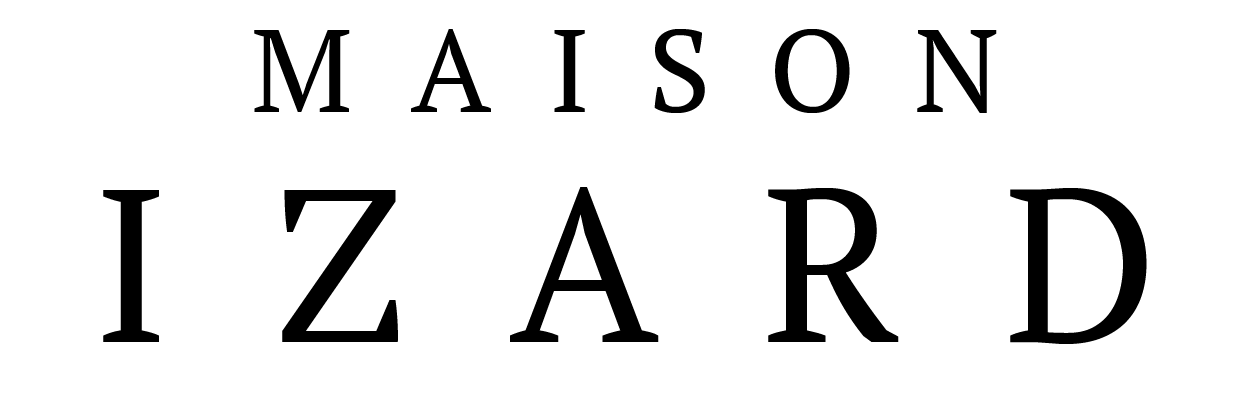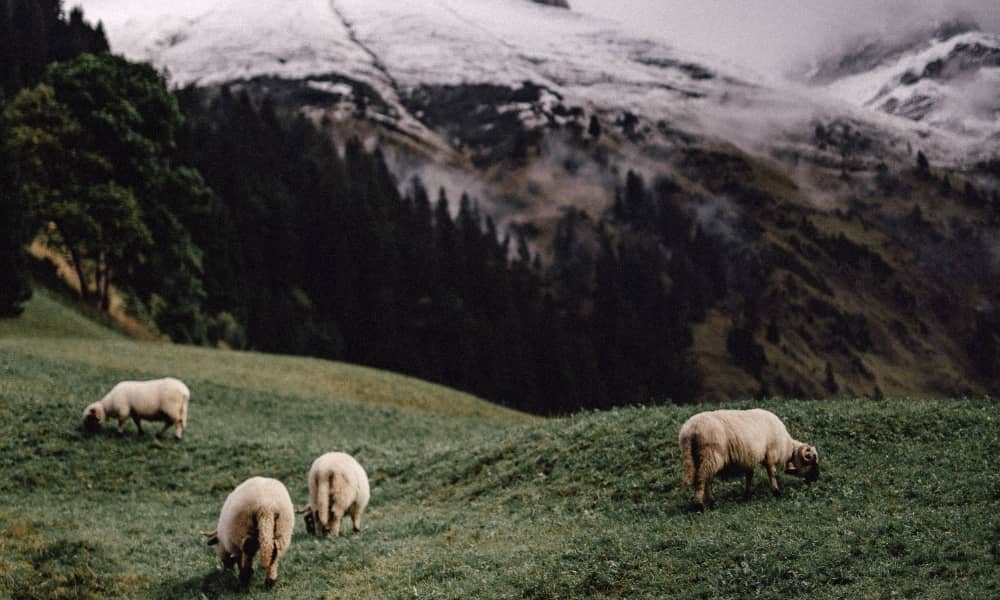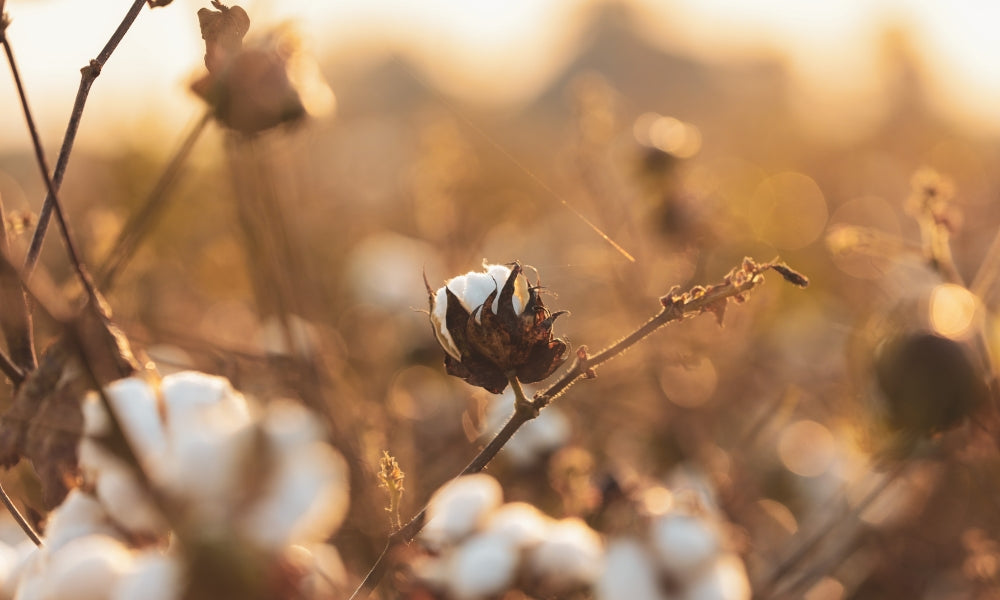Steps for making your favorite wool sweater
Steps for making your favorite wool sweater

After introducing you to the pyrenean wool, the one without which your favorite sweater would not have seen the light of day, it's time to dive into the long path of wool. Because yes, before obtaining the soft yarn that we all know, the wool must go through many stages . More than a walk, it's a real journey that this natural resource makes before it can reach our dressing rooms! Ready to board? So let's go !
Step 1: Food, marking and cleanliness, health first!
As we saw in our previous article (if you haven't read it, you can find it here ), the qualities of wool depend on many factors specific to the animal such as its breed, age or, of course, his health. However, there are other factors, depending on the breeding conditions this time, which will improve the qualities of the wool such as feed, type of pasture, cleanliness or the way of marking the animal. .
Let's start with food, like all living beings, it plays an essential role in our well-being and the maintenance of our health, while promoting the development and strengthening of our body.
In sheep, it's the same principle. Feed must be of reasonable quality and quantity , with variations depending on the age and sex of the sheep. It must therefore be accessible and ensure that the nutritional needs of the sheep are completely covered (energy, nitrogenous materials such as grass, vitamins and minerals) according to the seasons. As with all living organisms, water is also essential for the good health of sheep. As sheep drink between 5 and 6 liters of water per day, they must have access to clean water at all times.
Speaking of feed, there is a major challenge in meeting the nutritional needs of sheep in an economical, efficient, ecological and sustainable way: grazing.
The pasture represents a ground covered with grass, reserved for the feeding of the animals, in which the breeders bring their animals . The grazing grounds are relatively numerous and include meadows as well as more overgrown land, woods or vineyards and orchards. There are many grazing methods such as continuous grazing (the animals graze in the same area) or rotational grazing (several grazing places are exploited in turn in order to let the plot rest for the time of a resumption of vegetation of the land. grass), each method having the ultimate objective of providing the herds with quality grass, and in sufficient quantity.
Last important points exerting an influence on the qualities of the wool: the cleanliness of the animals and the sheepfolds, and the marking of the animals.
In order to avoid the development of all kinds of diseases and thus prevent the health of the sheep as much as possible, they should be offered a dry, clean shelter with comfortable mulch . The premises must also be well ventilated and limit drafts. The humidity should not be too high to limit respiratory problems. It is important to check all these parameters as often as possible in order to always ensure optimal cleanliness of the sheepfolds.
The last point impacting the qualities of the wool is the marking, an essential link in traceability, the principle of which is to affix an element making it possible to identify or locate the animal . Although it can be done in a more ethical and ecological way, with for example collars for marking, it is still often done with paint or marking sprays. Negatively impacting the quality of the wool by making it almost unusable depending on the type of products used, these latter options are the most economical and most widespread options among breeders. Indeed, concerning wool from the Pyrenees, these methods are widely used for three main reasons: marking habits (breeders still use the methods used by their parents or grandparents), the fact that marking is mainly used for spot animals from afar in the vast Pyrenean massifs, and the lack of interest in wool , which is often considered an economic constraint and not a potential resource, in particular because of the cost of shearing and maintenance of wool compared at the sale price.
Now that we have discussed in more detail the factors impacting the qualities of wool related to breeding conditions, we will be able to present our path to wool, the one by which this natural resource will become your new favorite sweater.
Step 2: shearing the sheep, between health and well-being

Did you know that sheep produce about 5 kilos of wool per year ? It will therefore not surprise you that, like humans in hot weather, the animal wants to get rid of this extra layer.
Of paramount importance for the health of the sheep , the shearing makes it possible both to prevent the sheep from suffering from the heat in the summer , as well as to remove the parasites present in the fleece and to facilitate the observation of possible problems. of health . Often carried out in the spring by a professional, before the arrival of the first big heat (which the sheep often do not support), it is an entirely painless process for the animal thanks in particular to the historical know-how of the shearers. An essential profession for the development of wool (there are more than 200 professional shearers in France for nearly 7 million sheep), these professionals, firmly rooted in their territory, make it possible to obtain quality wool while allowing to relieve the animals of this enveloping mass in the fastest and least uncomfortable way possible.
Must be carried out in a clean place, without humidity, almost immaculate, to preserve the wool and avoid the proliferation of diseases for the animals, the shearing must also allow a first sorting of the wool by separating the different races and categories (fineness and color ) so that we can sort the wools into separate bales and find the best possible value for each of these wools.
Step 3: Sorting the wool

As you will have understood, to make the most of the intrinsic qualities of the wools of the different breeds, it is essential to carry out a meticulous and organized sorting.
The objective of this essential step is twofold: it makes it possible to homogenize the raw material in order to obtain quality wool and facilitate the transformation process .
So, how does it actually work?
First, defective fleeces such as those that are felted, yellow or too jarry are eliminated.
Secondly, after being laid out one by one, on openwork tables, the fleeces are freed of foreign bodies (paint marks, excrement, plant debris, fibers that are too short, etc.).
Finally, the wool thus obtained is bagged in woven canvas bags (called curons) tightly closed according to its color and/or quality. It is then stored on pallets in a clean and well-ventilated room, ready to move on to the next step!
Step 4: Washing the wool

Now that the wool has been sorted, it is time to wash it thoroughly in clear water to rid it of organic matter (urine, excrement, grease), mineral matter (earth, sand) and vegetable matter (seeds, straw, hay). Following this bath, the wool is considerably lighter and loses up to 60% of its initial weight!
When washing, different treatments can be carried out: mothproofing, fireproofing, anti-felting, bleaching and/or carbonization of plant residues, but we prefer washing with cold or lukewarm water, which is much more natural! Indeed, it is thanks to the suint of the sheep, fat that the skin of the animal secretes and acting as a natural detergent, that the wool will self-clean, an economical and ecological solution in short!
After being rinsed in several baths of clear water, the fleece is dried in the open air (you know it now, wool likes oxygen, we can never repeat it enough!) or, for wool washing stations , in a drying block. Once the drying is done, the wool is ready to be dyed!
Step 5: Dye
Performed directly after the washing stage so that the color can set in the most natural and effective way possible, we perform the dyeing stage directly on the material, before carding . For example, all our ecru sweaters do not benefit from any dyeing, it is the raw color of the wool after washing! Carried out in partnership with our ennobler, located in the Tarn, the dyeing makes it possible to confer a color or to modify it thanks to a process of absorption of a dye. Committed to the preservation of the environment and the preservation of natural resources (especially water), our craftsman favors natural dyeing, has a biological treatment plant that complies with REACH regulations and recovers residues for use in agricultural composting.
Step 6: Carding and spinning

Provided by La Filature du Parc, a historic Tarn spinning mill specializing in the carding of wool , these two essential steps in the manufacture of a quality yarn are carried out masterfully by this workshop with exceptional know-how, labeled Entreprise of the Living Heritage!
Let's start with carding, carded wool means wool that has been disentangled and aired, the fibers are then aligned lengthwise to give a "ply" allowing the yarn to be made . Also necessary to complete the work of removing foreign bodies (which would not have been removed during the previous steps), this step is most often carried out on a roller carder or a drum carder.
It is at this stage that we mix our wool from the Pyrenees with post-consumer recycled polyamide and post-consumer recycled cotton to obtain a soft, warm and comfortable yarn .
After this first transformation, the veil thus obtained arrives on a divider which will separate it into a brittle, but aligned thread which is called pre-thread . The pre-threads will then be rolled up to be placed on the spinner. Before becoming the continuous, regular and robust thread that we know, these pre-threads will undergo three operations: stretching, twisting and winding. The thickness, regularity and intensity of the twist will depend on the desired yarn and the intrinsic characteristics of the wool used.
After these three operations, we can finally talk about yarn! To be used in the knitting of your favorite sweaters or the weaving of the woolen cloth of our coats, it is put in the form of cones to avoid unwinding and to facilitate transport.
Step 7: Weaving and Knitting
A. Warping, Weaving and Sewing

Last steps before obtaining the finished products in woolen cloth that you know, such as the Cami cape or the Ubac coat , warping, weaving and sewing are the essential operations for the realization of a robust, comfortable and quality.
Before weaving, there is an unknown but very important step: warping. This operation consists in arranging the threads side by side over a long length in order to form a layer over a determined width . And it's a real painstaking job that our warping machine does by counting each thread of the warp 1 to 1, repairing as soon as a thread breaks, and placing the colored threads according to the requested rhythm, so that when the beam is unrolled and woven, the patterns appear thanks to the weft. To realize, on a width of 145 cm, between 2000 and 3000 threads are placed on the beam, depending on the thickness of the thread.
After this preparation operation, the weaving can begin. This step is a real millennial know-how, perpetrated from generation to generation by true enthusiasts. Originally, weaving was a predominantly artisanal activity. It was only with the invention of the flying shuttle (a sort of piece of wood containing a bobbin and used to pass the weft thread between the warp threads) that the profession began to develop. The arrival of the Jacquard loom in the 19th century (loom allowing the production of complex patterns and having needles, punched cards and a cylinder) and the mechanical looms in the 20th century made it possible to fully develop this method of garment manufacturing in the global textile industry.
Let's move on to the technical part to arrive at the realization of the thick fabrics that we can still observe with our favorite weavers. To make these fabrics, the threads previously obtained are then connected and knotted one by one on the loom, and , thanks to the intersection between vertical threads (warp threads) and horizontal threads (weft threads) , unfold little by little until they become an imposing and robust woolen cloth!
Finally, for these beautiful fabrics to create your favorite coat, there is one last step: sewing.
At Maison Izard, we have entrusted this step to La Soulane, a creative third place located in the Hautes-Pyrénées, where our clothing workshop is located.
Upon receipt of the woolen cloth in the form of rolls, the workshop model maker grades the patterns and cuts them out. This is followed by an operation requiring rigor and dexterity: assembly. The principle is to sew all the pieces previously cut to obtain the coats and capes that you love so much. After a few touch-ups and finishes, they are ready to join our premises, and later, your dressing rooms!

B. Knitting

After discussing weaving for our woolen cloth products, it's time to talk to you about knitting, this step without which your favorite woolen sweaters would remain sketchy!
Knitting is the “madeleine de Proust” stage, the stage we all know and which reminds us of the sweaters knitted by our grandparents. Of course, the industrial process is more automated, but it is nonetheless very artisanal and impressive!
But what is knitting really?
A technique for manufacturing fabrics in which loops of yarn called stitches intertwine with the help of needles, knitting makes it possible to form an extensible fabric, called knit, which has the advantage of being more flexible and elastic than fabrics woven . Being able to be done by hand, thanks to needles, as well as thanks to a knitting machine, this ancestral method is widely used today.
The origins of this method of making are, like weaving, very old. Knitting dates back to the 3rd century with probably a much older origin. The ancient knitters worked with wooden or bone needles to make sweaters or dresses. In France, knitting appeared during the 8th century and really developed as a commercial activity from the 16th century, driven by the arrival of knitting looms. These knitting looms have evolved over the centuries and needs, to the point of changing the scale of the loom and allowing its industrialization. Today, knitting is back in fashion among individuals, and is carried by revolutionary new machines for manufacturers. The historical craftsmanship of our seamstresses and the techniques of yesteryear, such as hand mending, are also increasingly sought after in the textile industry.
At Maison Izard, we work with the Joly workshop, which has traditional looms and new revolutionary machines for knitting sweaters, making it possible to obtain a finished product that is durable and almost waste-free. These machines, you have surely already heard of them, they are integral knitting machines, 3D knitting or whole garment for English speakers.
These devices allow the creation of a garment by adding material from a 3D model. However, unlike a 3D printed garment which has a very different structure, texture and visual appearance from a traditional fabric garment, a 3D knit has exactly the same characteristics as a conventional knit .
The advantages of these machines are significant: reduction of textile waste, less energy-intensive process, flexibility, seamless finished product, longer garment life, etc.
Of course, as efficient as these machines are, nothing can replace the skill and know-how of the knitters!
For this, the workshop is also specialized in hand remeshing, a rare know-how in France and highlighted by the Entreprise du Patrimoine Vivant label which rewards French companies with industrial and artisanal know-how of excellence. The hand remeshing allows an exceptional finish providing great comfort. This is why the collars of our wool sweaters and our socks are remeshed by hand to bring you comfort and fluidity !

Well, what a trip! Now you know all the stages that wool goes through before becoming a comfortable, warm and durable garment.



